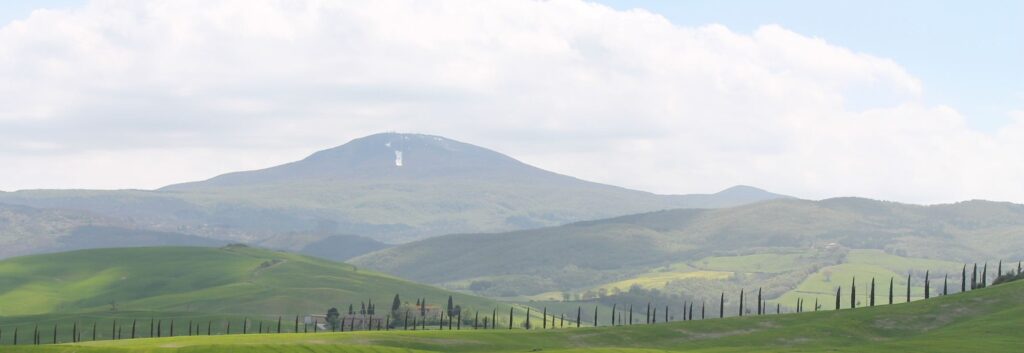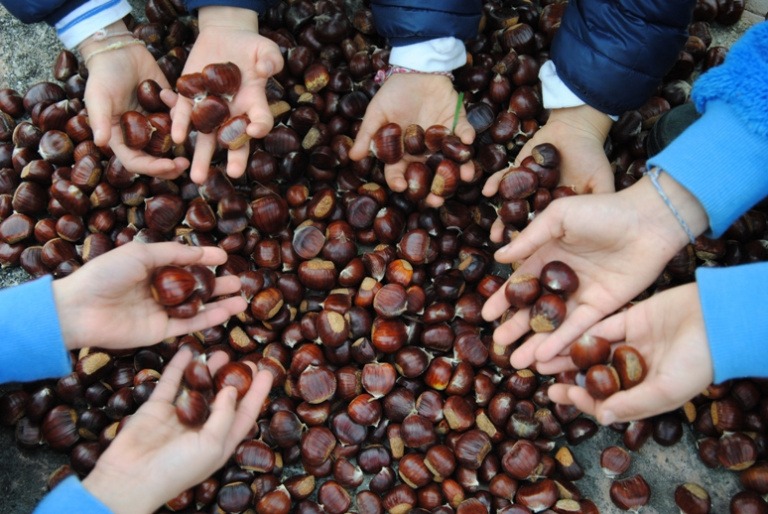Foliage in Tuscany’s Maremma: autumn in the most beautiful woods
The foliage in Tuscany’s Maremma is one of the most breathtaking spectacles that nature and these wonderful landscapes offer us every year. The perfect time to experience it is from mid-October until the end of November. It is during this month and a half that you can truly be captivated by the vivid colors of the autumn leaves.
This is, of course, an approximate period, which may vary from year to year and can be either earlier or later depending on weather conditions.
Foliage on Monte Amiata
One of the most beautiful places in all of Tuscany’s Maremma to enjoy the foliage is Monte Amiata.
This mountain range of volcanic origin lies in the Tuscan Anti-Apennines, between the Maremma, Val d’Orcia, and Val di Paglia, and stretches across the provinces of Grosseto and Siena.
Monte Amiata, an ancient volcano, comes alive in autumn with centuries-old chestnut woods and beech forests, creating a red carpet of leaves to walk on. Here, you can admire the wonder of the foliage by choosing one of the many trekking trails starting from villages such as Abbadia San Salvatore, Arcidosso, and Santa Fiora, which wind their way through the woods.
Autumn in Maremma also means chestnuts, a precious fruit celebrated with dedicated festivals that take place between October and November.
Where to see foliage in Tuscany’s Maremma
The area is particularly rich in enchanting villages as well as trails designed specifically for this purpose:
Strada della Castagna del Monte Amiata: a network of seven trails that blend history and nature. Walking along this route means retracing the history of the Amiata people, who still care for the woods with their own hands, nurturing a fruit worthy of the IGP designation. The Strada della Castagna del Monte Amiata leads us through a territory defined as “the landscape of the chestnut tree and the human activities within it, typical of such a landscape.”
This route takes you across the phytoclimatic belt of the Castanetum on the Grosseto side. Throughout the Monte Amiata area, there exists a unique chestnut culture of great anthropological and natural richness, whose traces date back to the 8th century AD.
The Strada della Castagna del Monte Amiata offers seven walking itineraries, easy and suitable for everyone — such as the one starting from Tepolini, a 4 km ring trail crossing chestnut groves, olive groves, orchards, and picturesque villages.
What to do in autumn in Tuscany’s Maremma
One of the musts is visiting small villages and enchanting natural locations:
Castello del Potentino in Seggiano: located in the hamlet of the same name in the northern part of the municipality of Seggiano, beyond the Vivo stream. It was built in the 11th century as an ancient possession of the Bishops of Chiusi. During the 13th century it came under Siena’s control, and at the beginning of the 14th century it was contested by various noble families such as the Buonsignori, Tolomei, and Salimbeni, who divided the property and turned it into an important rural complex.
In the 17th century, the fortress was purchased by the Bourbon del Monte family, who remained owners until the last century, when British writer Graham Greene acquired it and transformed it into a farm estate.
Even today, Castello del Potentino preserves its original medieval appearance. It is divided into two distinct areas: the outer one, which includes annexed rural buildings and leads to the second area; and the more internal one, accessible through an arched gate set into a curtain wall with battlements on top.
The manor area is dominated by the castle itself, which develops in an L-shape around a courtyard. Unlike the rest of the complex, the building is Renaissance in style due to renovations carried out between the 15th and 16th centuries. Here we find an architraved entrance door surmounted by a noble coat of arms, while the roof features a small bell gable.
Beyond the manor area lies a third, well-defined section that once housed an Italian-style garden, now completely altered. Inside the structure, there is also the family chapel dedicated to Sant’Antonio da Padova.
Santa Fiora: part of the “I borghi più belli d’Italia” circuit, Santa Fiora is a small town in the province of Grosseto, located almost 700 meters above sea level. The territory covers nearly 63 km² in the Monte Amiata area, stretching across both hilly and mountainous terrain.
In 2015, the village was awarded the Orange Flag by the Touring Club Italiano for its high tourist, environmental, and socio-cultural value.
Among the main points of interest are: Pieve delle Sante Flora e Lucilla, Chiesa del Santissimo Nome di Maria, Chiesa di Nostra Signora del Sacro Cuore, Chiesa di Santo Stefano Protomartire e Convento della Santissima Trinità, Cappella di San Bastiano, Cimitero monumentale di Santa Fiora, Convento di San Michele Arcangelo, Sinagoga di Santa Fiora, Palazzo Pretorio, Palazzo Sforza Cesarini, Palazzo Luciani, Palazzo delle Scuole, Peschiera, and the Centrale geotermica Bagnore 3.
Other news
Our tips on where to see the foliage in Maremma and what to do in autumn
Discover the secrets of the legendary shepherds riding the Tuscan Maremma.









